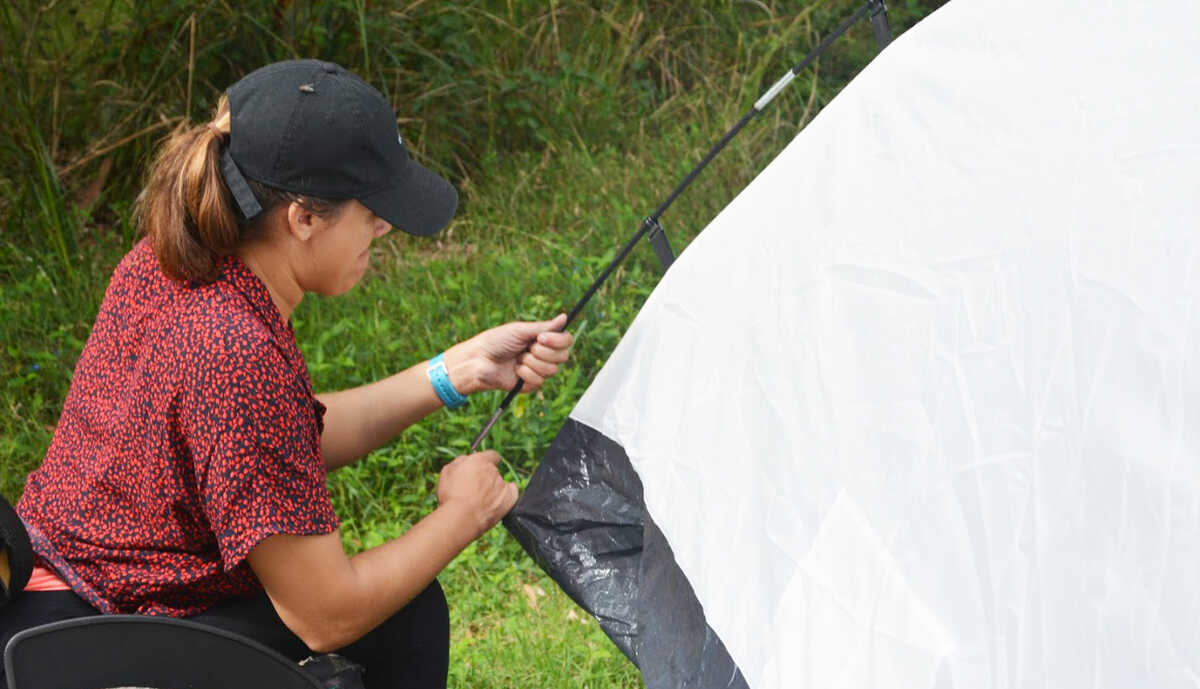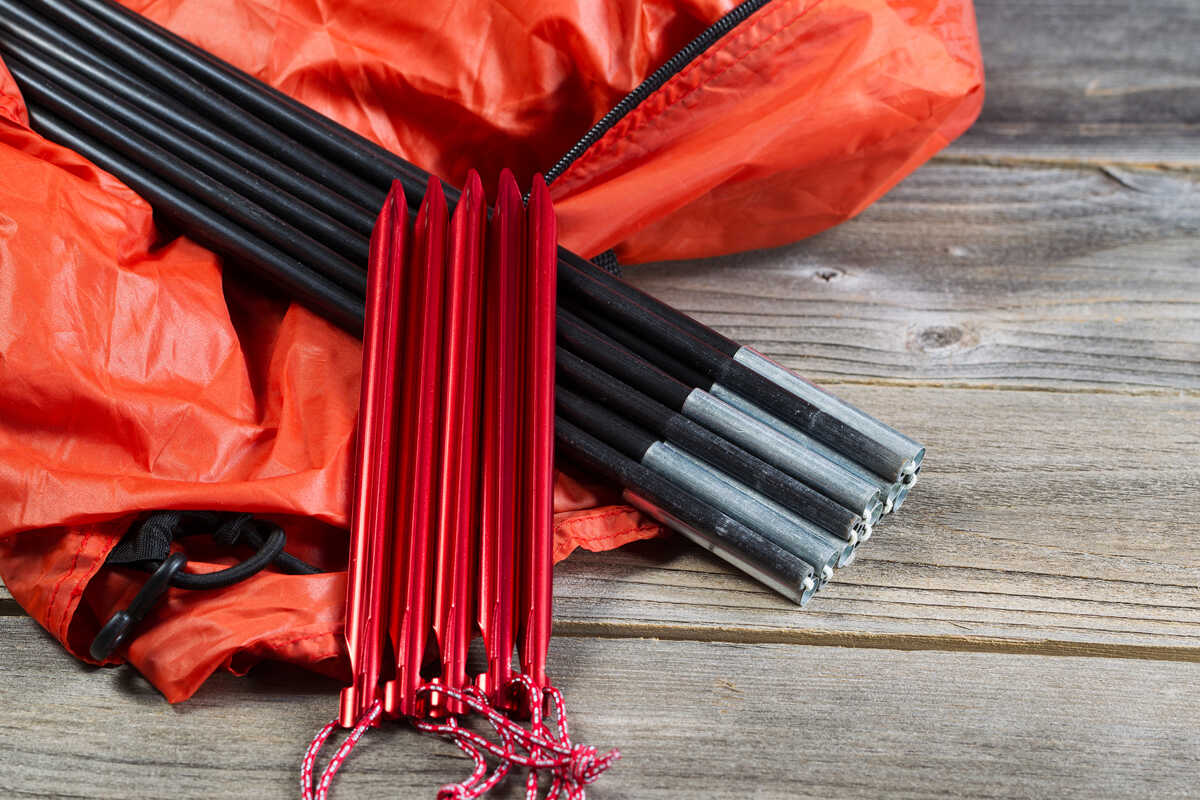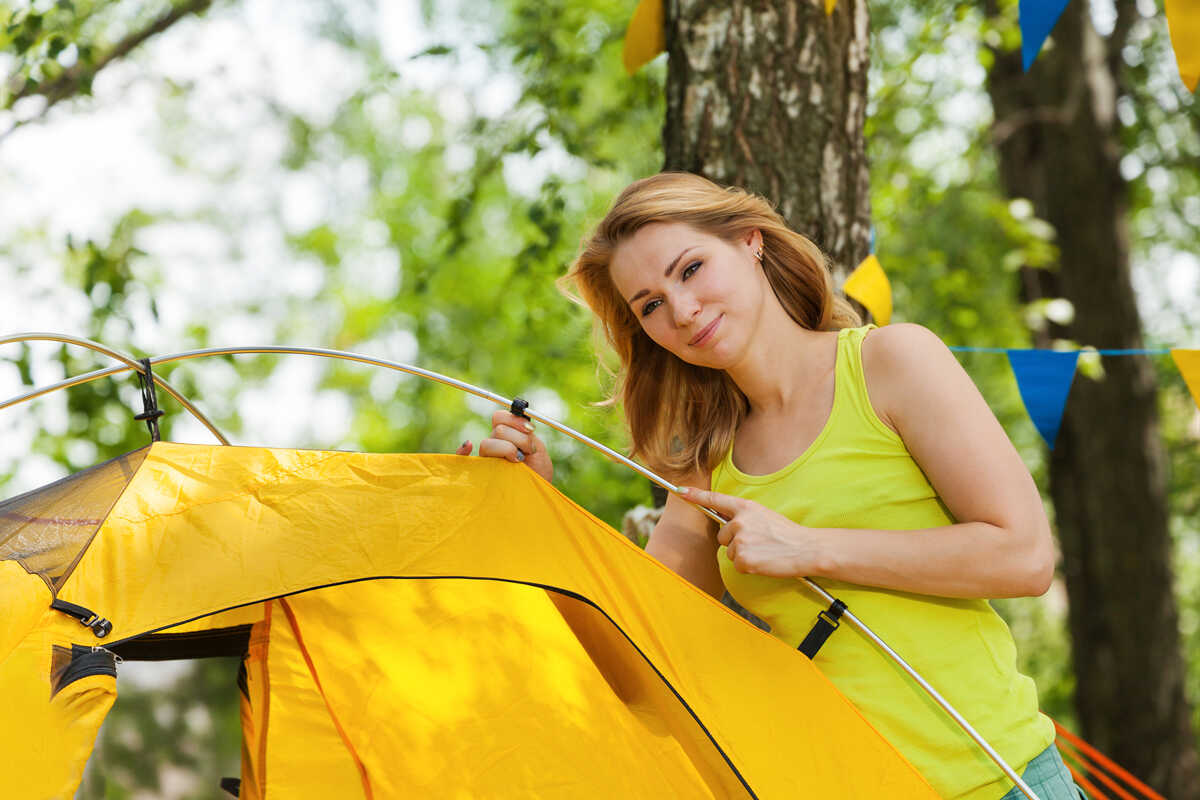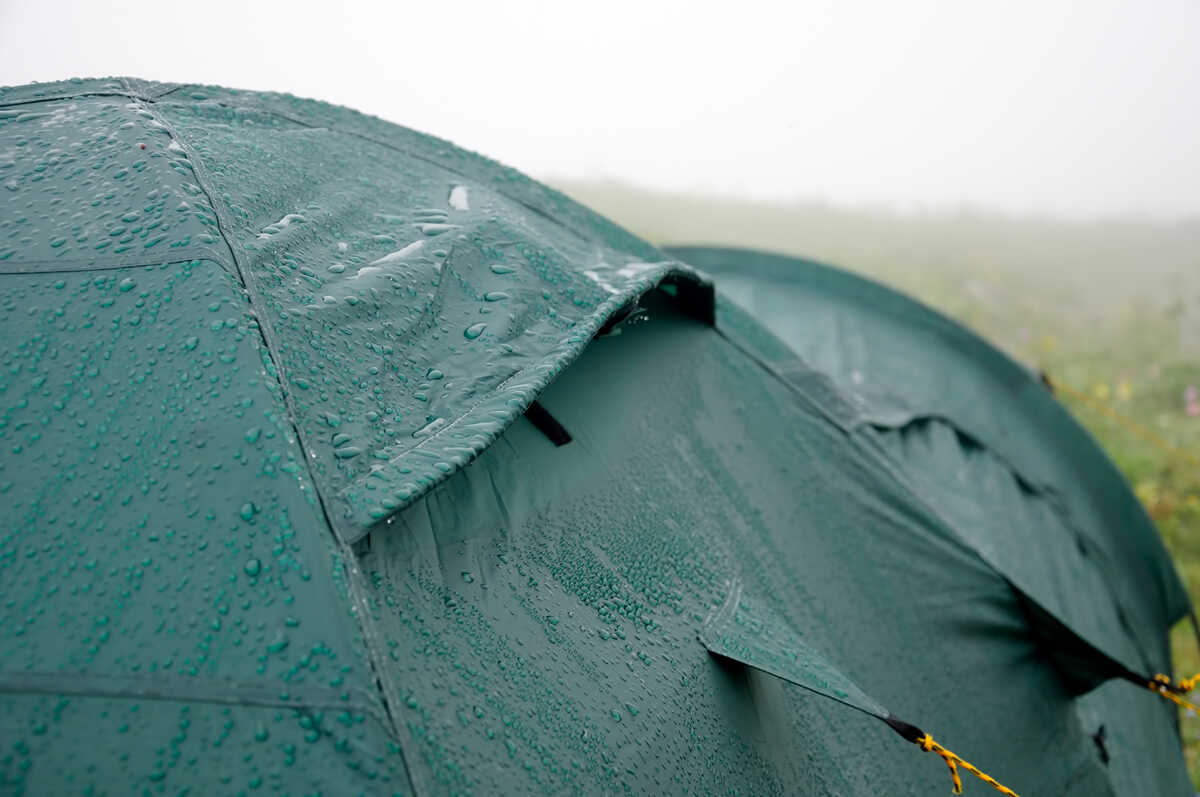{{{description}}}
Back home, there are some simple ways to care and maintain your shelter to make sure that it stays in good condition for the next trip!
Here are our guidelines for what to look for and how to care for and maintain your chosen shelter.
Cleaning and drying
To prevent spread of unwanted spores, fungi, bacteria and so on between natural areas, clean off all natural material such as mud, earth, sand etc. from poles. The easiest way to do this is by running a damp cloth over the poles to remove any mud or earth that has stuck to the poles. Make sure to clean both the outside of poles and the joints. Sand and grit can easily get caught in the joint, which can over time cause wear and tear to the pole material, so be sure to get this out.
Transfering of fungi or bacteria between natural areas can cause great devastation with diseases such as Phytophthora. As bushwalkers we can take steps to improve biosecurity even further by spraying our equipment suchs as poles and pegs with a 70% methylated spirits mix (with water).
Poles should be completely dry before packing away. Lay out poles in a warm, dry area deconstructed to air out both the joint and poles.
Avoid agressively flicking poles out or quickly constructing/deconstructing them as this is likely to weaken and split them over time.
If you’ve been camping near saltwater, wash poles with fresh water to remove any salt crystals and reduce the risk of rust. You can also spray a thin layer of silicon spray over the poles.
Repairs
Inspect poles for any damage to the poles themselves, the joints or the elastic connections. If the poles have any damage, it’s best to replace them. The elastic on the other hand is something that you can get away with being damaged in the field as it is non-essential for holding up the tent, but rather provides a convenient way to hold the poles together when threading through the body of the tent, and keeps pole sections in the correct order.
Both pole and elastic repairs are straightforward.
Snowy’s provide an excellent article outlining how to repair a broken pole.
For broken aluminium poles, try to avoid cutting materials. Instead, purchase the correct spare part for your tent/shelter model.
Long term storage
Fold down poles from the middle sections outwards as this keeps the elastic most evenly distributed throughout the pole sections and prevents long terms stretching. Store your dry, clean poles in a protective cover (usually provided by the tent manufacturer) in a cool dry place.

Cleaning and drying
Clean tent pegs using hot water to remove all organic material. Dry thoroughly before storing as any moisture over time will damage and degrade pegs.
Tent pegs are at great danger of transfering of fungi or bacteria between natural areas can cause great devastation with diseases such as Phytophthora. Once cleaned of obvious dirt please spray or wash your pegs with a 70% methylated spirits mix (with water).
Repairs
The most likely damage to tent pegs is bending, particularly if they’ve been forced into hard ground or against rocks.
The internet is full of forum discussions on the best way to straighten pegs (e.g. yahoo.com, lifehacks and backpackinglight), with opinions varying from ‘just bend them back into shape with your hands’ through to non-ferrous alloy metallurgy academics endorsing a DIY annealing process.
The tricky thing about most metals is that that they become weaker after they have been bent, so the very process of straightening can further weaken or snap the pegs. Ultimately, it comes down to the material that the pegs are made from. For steel pegs, straightening is OK, but for aluminium breaks are much more common unless the metal is first heated up. This process is called annealing.
Annealing, where you heat the metal up close to boiling, can be done at home, but requires exceptional care to be taken so as not to burn yourself.
For most, the easiest and safest option is to manually straighten using an aid of some kind, either wooden blocks or a metal object with a hole in it (e.g. a spanner with a ring). Consider replacing the pegs, you can buy a bag of lightweight pegs fairly cheaply and replace them as needed.
Long term storage
Dry thoroughly before storing as any moisture over time will damage and degrade pegs.

Cleaning and drying
The inner tent usually stays relatively clean during a trip as you try to avoid dragging too much earth and mud into it, and generally shake it out well in the field before packing up. However, in order to keep your tent lasting a long time, it’s worth spending time back home checking and cleaning. This prevents mould growing and will ensure your tent lasts for many years to come.
Check that the material is clean by opening up the tent and inspecting the inside as well as the walls and base. Remove any mud, earth or sand using warm water and non-detergent soap.
Air out inner thoroughly (using indirect sunlight) and make sure it’s completely dry before packing away in a cool dry place. Never use artificial heat or direct sunlight to dry the inner as this can melt or damage the materials.
Repairs
Repair any rips or tears in the fabric using a tent repair kit. If the tear is through the fabric mesh, then get replacement mesh and sew a patch on. It won’t look pretty, but it’ll do the job just fine!
Long term storage
Make sure that fabric is clean and bone dry before storing in a cool dry place. It’s a good idea to store the fabrics loosely to allow a small amount of airflow and prevent mildew buildup.

Cleaning and drying
The outer fly of a tent (or tarp itself) is fairly prone to picking up mud and dirt on trips so it’s worth spending time cleaning it well when you get home and before packing away in long term storage.
Check that the material is clean by running your hands over both sides of the material and removing any mud, earth or sand using warm water and non-detergent soap. Check zippers, guy lines and any other attachments too.
Air out the outer fly or tarp thoroughly (using indirect sunlight) and make sure it’s completely dry before packing away in a cool dry place. Never use artificial heat or direct sunlight to dry the material as this can melt or damage the materials.
Repairs
As with the inner, repair any rips or tears in the fabric using a tent repair kit. Check that the sealant is still intact, and periodically apply DWR (durable water repellent) to the fabric.
Long term storage
Again, as with the inner material, make sure that fabric is clean and bone dry before storing in a cool dry place. It’s a good idea to store the fabrics loosely to allow a small amount of airflow and prevent mildew buildup. It is worth storing all the parts of your tent in a single bag, so you know where all the parts are for your next trip.
